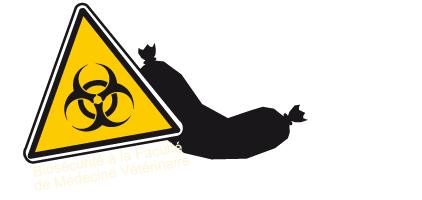

• Any injury on hands or face
• Following clinical signs: gastro-enteritis, runny nose, ears, skin disorders, etc.
• Farm visit 72 hours before visiting an abattoir or food industry company
• It is absolutely compulsory for students who are pregnant to inform the supervisor at least one week before the visit.
• Students with disabilities (ESH) must absolutely inform the supervisor at least one week before the visit.
In the student area in the Droixhe abattoir, lockers are available to store personal items.
Put on clean white boots, a safety helmet and disposable equipment (apron and cap). Additional sets for visitors (single-use apron and cap), including overshoes as well, will be taken to visit the cutting and processing sections.
Put on clean overalls, a pair of white boots, a safety helmet and single-use equipment (apron, cap, protection sleeves and gloves).
Students should wash their hands in line with the company regulations:
Note:
• At the entrance / exit to the premises, after going to the toilet and as often as possible, thoroughly wash your hands with water and antibacterial soap, anti-bacterial wipes or alcohol-based gels.
• Paper towels used to dry hands should be disposed of in the bin provided.
• The use of latex gloves does not mean that thorough hand washing is not required.
1) Wet hands and forearms with warm water
2) Add 3-5 ml (1-2 pressures) of soap to the palm of the hand
3) Soap and rub strongly each side of the hands to above the wrists, between fingers and under nails during 10-30 seconds
4) Rinse in warm water until removing all soapy residue
5) Dry hands with a single-use paper towel
1) Apply a knob of solution in the palm of the hand
2) Rub the opposite hand: between fingers, then the whole hand
3) Repeat the operation with the other hand
4) Rub strongly until completely dry; do not rinse
Wounds to the hands must be covered with a clean metallic blue plaster (available on site).
Strictly follow the hygiene and safety instructions given by the assistant in charge of the practical session. Any error will be punished, up to and including exclusion of the student.